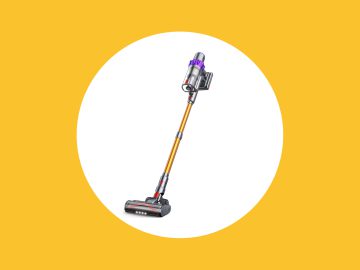Mobile advertising company Liftoff has invited inspirational women working on some of the biggest mobile games to discuss their achievements, challenges, and future aspirations. This time, the focus is on Miaomiao Li, Performance Marketing Manager at Rovio.
There’s no ignoring the mammoth collection of Pokémon merchandise and other video game memorabilia showcased throughout Miaomiao Li’s home: this is clearly someone who spends considerable time exploring virtual worlds on multiple platforms. It’s hardly surprising Li feels perfectly at home as a Performance Marketing Manager at Rovio, creator of the Angry Birds franchise, where she’s been nested for three years.
Despite this, Li still feels new to the gaming industry. Much of her professional career has been in accounting, which she studied at the Hubei University of Economics. A gamer at heart, Li soon realised that a future in auditing and economics wasn’t for her. She pursued a master’s degree in marketing, which eventually landed her at Rovio as a Trainee.
From mobile marketing trainee to Angry Birds expert
Moving from accounting to Angry Birds was quite challenging. Li had a strong understanding of numbers and data from her accounting background, but she was utterly new to the mobile marketing world.
“The only thing I understood at the start was numbers,” Li says. “I had to learn everything from scratch from my colleagues. I didn’t know anything about mobile or UA. I had no clue how to calculate ROI. I knew nothing about ATT (App Tracking Transparency), privacy, MMPs (mobile measurement partners), or anything else. One thing that worked in my favour was that mobile is still a relatively new industry, so everything is well-documented. Reading through reports and other free resources online helped me get up to speed during those early days.”
But Li did more than just get up to speed. After seven months, she quickly ditched her training wheels and became a Junior Performance Marketing Specialist. After just over a year, she made another leap forward to Performance Marketing Specialist and has just recently been promoted to Performance Marketing Manager.
Currently, Li’s primary goal is to attract new users to Angry Birds 2. The title is by far the most successful in Rovio’s history, generating over $600 million in revenue since its launch in 2015. Why focus on attracting new users to a game that’s already the most successful in Rovio’s history rather than a newer title such as Angry Birds Journey?
“One of the benefits of working with a big game like Angry Birds 2 is we have a huge number of organic downloads coming in”Miamiao Li
“One of the benefits of working with a big game like Angry Birds 2 is we have a huge number of organic downloads coming in,” Li says. The users we’re focused on acquiring have a much better profile than those who come in organically. They’re more dedicated players with a much higher lifetime value: They play many different games and spend money on those games. They ensure we stay sustainable in the long term.”
Managing privacy’s impact on user acquisition
Acquiring high-value users can be an uphill battle, as Li has to stay one step ahead of the ever-growing user acquisition challenges. One of her most significant obstacles is the limited availability of data due to more comprehensive privacy policies. It all began with Apple’s ATT in April 2021, followed by the SKAdNetwork (SKAN) framework changes and Google’s Privacy Sandbox—with GAID deprecation still to come.
The impact of these can be felt across the entire industry, with over 60 percent of respondents in Liftoff’s 2024 App Marketers Survey (collated from more than 500 professionals working across mobile marketing) stating that they felt ATT had increased the costs of their campaigns and resulted in them being less successful overall.
Li does have one extra advantage on her side: trust. She notes that years of success with Angry Birds 2 have fostered a loyal user base more receptive to data sharing than the rest of the industry. While she won’t share exact figures, it’s worth noting that the ATT opt-in rate for the mobile industry is around 34 percent (with gaming coming in slightly higher at 37 percent), according to MMP Adjust.
“We are constantly finding new ways to improve how to operate UA around SKAN 4, meaning there’s always a lot of work to be done”Miaomiao Li
The changes to SKAN are some of the biggest to affect ad networks in recent memory, with over a third of mobile marketers still needing help understanding all the nuances. That’s not the case for Li, who acts as the SKAN point of contact in her team at Rovio. She regularly discusses the issues Rovio is facing with different networks and arranges tests to assess if there are better ways to optimise user acquisition.
“We are constantly finding new ways to improve how to operate UA around SKAN 4, meaning there’s always a lot of work to be done,” Li says. “We’re collaborating with different networks for SKAN 4.0 experiments on the latest SKAN compatible products, testing different SKAN schema, and utilising the second and third postback in revenue modelling. It is challenging to measure the exact outcome of each of our tests, but we are confident that they can bring us one step closer to the optimal UA strategy on iOS.”
Discussing the challenges facing new mobile games
Li points to growing competition as another of mobile marketers’ most significant challenges. It’s no secret that mobile is the most lucrative segment of the global games industry. Newzoo’s Global Games Market Report found that mobile generated 49 percent of all video game revenue worldwide ($90.5 billion) last year. Li says that a constant influx of new games and privacy difficulties are causing CPI costs to increase.
“Competition across the market has become really intense,” Li says. “Our CPI has been growing year after year, which makes the prospect of launching a new game onto the market quite daunting. The last mobile game to release that really lived up to the hype was Monopoly GO! I don’t think a title has achieved that same level of breakout success since then.”
GameRefinery, a Liftoff company, found that only five of the top 30 grossing mobile games in the US iOS market (as of April 2024) were released last year. By contrast, 21 of those top 30 titles are at least five years old, with the likes of Candy Crush Saga and Clash of Clans dating back as far as 2012.
“Launching a new mobile game, especially in a saturated genre like puzzle games, presents a significant challenge in terms of user acquisition costs,” Li explains. “It’s crucial for us to find innovative ways to reach and engage potential players who might already be invested in other titles. However, this challenge also presents a unique opportunity for us to push boundaries and experiment with new UA strategies that resonate with our audience and showcase the distinct appeal of our games”





